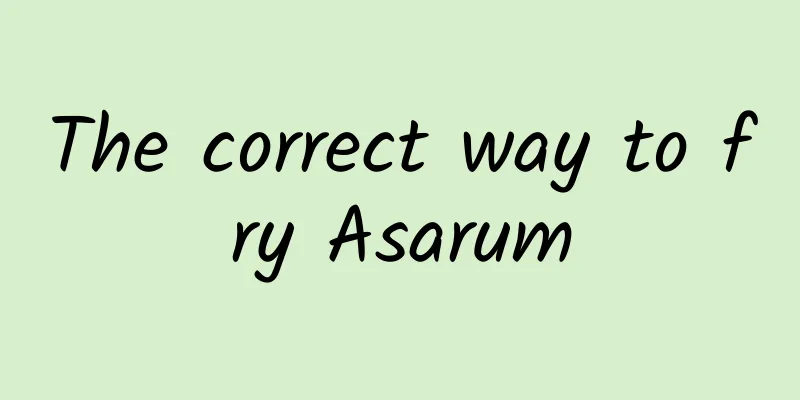What are the effects and functions of Purple Beadgrass?

|
Herbs are very common in our daily life, especially in traditional Chinese medicine. Almost all plants have the ability to treat corresponding diseases. For example, Callicarpa ovata, a plant that can be found everywhere in the fields, is used by traditional Chinese medicine as an extremely effective therapeutic herb. And Purple Beadgrass is indeed a medicine that can treat certain diseases. Let’s take a look at the effects and functions of Purple Beadgrass. Callicarpa ovata is a plant of the genus Callicarpa in the family Verbenaceae, and its roots and leaves are used as medicine. The leaves are collected in summer and autumn, washed and used fresh or dried and ground into powder for later use; the roots can be collected, sliced and dried throughout the year. Shrubs to small trees, up to 3 meters high. The twigs are covered with grayish white coarse bran-like hairs and long hairs. The leaves are opposite, oblong or elliptic-lanceolate. Small purple flowers bloom in the leaf axils in summer and autumn, and many flowers are gathered into polychaete cymes. The fruit is small, spherical, about 2 mm in diameter, and purple-red when ripe. ①Hemostatic effect Purple Bead Herb Injection can increase the platelet count in humans, shorten the bleeding time, blood clot contraction time and prothrombin time. The frog mesentery shows vasoconstriction, and dripping the solution of Callicarpa ovale on the intestinal wall of rabbits can cause strong spasm and contraction of the intestine, and the serosa turns from pink to white, which can shorten the bleeding time of rabbits. No. 35 hemostatic powder, which uses Callicarpa ovata extract as the main ingredient, has a hemostatic effect on dog liver, spleen trauma and gunshot wounds. ② Antibacterial effect Purple Beadgrass has inhibitory effects on Escherichia coli, Shigella flexneri, Staphylococcus aureus, Streptococcus, etc. Nature and flavor: pungent, bitter, neutral. Enters the liver, spleen, and stomach meridians Function and indications: Disperse blood stasis, stop bleeding, reduce swelling and relieve pain. Leaves: used for hematemesis, hemoptysis, epistaxis, and bloody stool; used externally to treat bleeding from trauma. Root: swelling and pain caused by falls, rheumatic bone pain. Callicarpa ovata, also known as purple bead or hemostatic grass, tastes bitter and astringent, has a neutral nature, and has the functions of stopping bleeding, dispersing blood stasis, and reducing inflammation. The leaves contain a hemostatic ingredient called flavonoid condensed tannin, so it has the effects of stopping bleeding, dispersing blood stasis and anti-inflammatory. The injection prepared with Callicarpa oleifera extract can be used to treat gastrointestinal bleeding, incision bleeding during surgical operations, and postoperative bleeding. The medicinal parts are the leaves, stems and roots of Callicarpa serrata and Callicarpa ovata of the Verbenaceae family. Usage and dosage of Purple Bead Grass: 0.5-1 liang of leaves and roots; appropriate amount of leaves for external use, grind dry leaves into powder and apply to the affected area. |
<<: What are the effects and functions of silver thread lotus?
>>: What are the effects of mugwort pillow?
Recommend
The efficacy and function of iron arrow
Iron arrow is a traditional Chinese medicine. The...
JD.com: The cumulative order amount of JD.com's 6.18 in 2022 exceeded 379.3 billion yuan
JD.com announced the cumulative order amount of t...
What are the benefits of drinking Gotu Kola water?
Gotu kola is a plant of the Morphological family ...
Can we genetically modify pests to make them 're-insects'?
Produced by: Science Popularization China Author:...
What are the medicinal values of white fungus
Many people are familiar with white fungus. White...
Why can’t we see the far side of the moon from Earth? How difficult is it for Chang’e-6 to land on the far side of the moon?
Why can't we see the far side of the moon fro...
The "Sky Catcher" Builders on the 4,400-meter Plateau
How long does it take to walk 1.3 square kilomete...
Tmall: A total of 402 brands will have sales exceeding 100 million yuan on Double 11 in 2023
Tmall Double 11 2023 ended. Official data showed ...
After Webb, space will welcome these detection artifacts
For humans, 2021 is coming to an end. But for ast...
Well-known martial arts actor died of esophageal cancer. Is hoarseness a sign of esophageal cancer? The truth is...
Recently, the news that "Martial arts film s...
The efficacy and function of night walking
Xingye is a very good medicinal herb. It is often...
The efficacy and function of small stone moss
Lithops is a common medicinal material in traditi...
Do you believe in lasers?
Produced by: Science Popularization China Author:...
The efficacy and function of Qingsilong
As people's living standards improve, they pa...
This "holy medicine" for curing diseases must have grown in your field.
Traditional Chinese medicine is a unique medicine...









